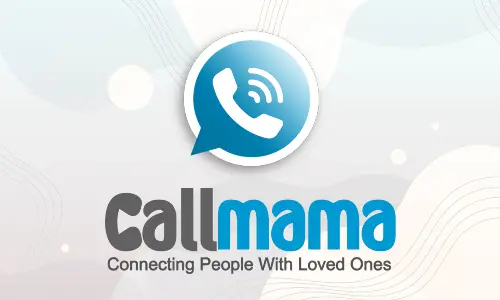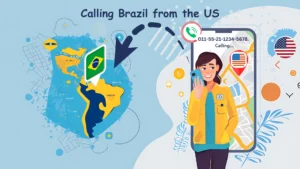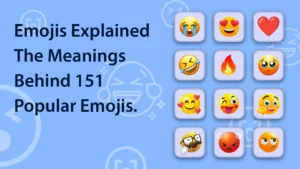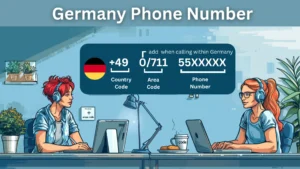The Rise of Mobile Communication
Since the first mobile phone call in 1946, mobile communication technology has evolved rapidly. The development of cellular networks in the 1980s enabled widespread mobile phone ownership. This laid the groundwork for the first text message to be sent on a mobile device.
The Early Days of Mobile Phones
- 1958 – First wireless phone systems introduced for vehicles
- 1973 – First mobile handset was invented by Motorola
- 1979 – First cellular network for commercial use launched in Tokyo
The Introduction of 2G Networks
- Early 1980s – Analog 1G networks limited capacity
- 1991 – 2G digital networks launched, enabling text messages
- Provided the infrastructure to make text messaging possible
Paving the Way for Text Messaging
- 1987 – Study proposes sending messages over cellular networks
- 1992 – Neil Papworth sends the first text message over Vodafone’s network
- SMS or Short Message Service was born, changing communication forever
The term “text message” was a revolutionary development in communication technology, allowing text-based messages to be sent wirelessly over cellular networks for the first time. This set the stage for the incredible growth of text messaging in the coming decades.
The First Text Message: A Historic Breakthrough
The sending of the first text message in December 1992 represented a major milestone in communication technology. Though primitive by today’s standards, this pioneering text set the stage for SMS messaging to become one of the most widely used forms of communication around the world.
The Pioneering Participants
On December 3, 1992, Neil Papworth, a 22-year-old software engineer for Sema Group in England, sent the first SMS text message. He typed the text on a computer since mobile phones did not have keyboards at the time. The recipient of this inaugural text was Richard Jarvis, a director at Vodafone. Papworth sent Jarvis the message on an Orbitel 901 handset that had been modified to receive SMS messages. The Orbitel 901 was one of the first commercial mobile phones released by Orbitel, now a subsidiary of Nokia Mobile Phones.
The Simple Yet Historic Text
While composing the first text message, Papworth decided to keep it succinct and festive. He simply typed out “Merry Christmas” as the contents of the first SMS text. Though only 14 characters long, this brief text message made history as the beginning of SMS messaging technology. Once received on Jarvis’s Orbitel 901, this short text eliminated any doubt that sending messages via mobile networks was technologically feasible. Papworth and Jarvis were making history with the world’s first text, even if they didn’t realize it at the time.
Opening the Door for SMS Messaging
Papworth sent his holiday text message over the Vodafone GSM network in the United Kingdom. Vodafone engineers had previously modified their systems to enable the sending and receiving of text messages. Prior to this milestone moment, however, SMS messaging only existed in theory.The successful transmission of Papworth’s text proved that SMS messaging technology actually worked. Once Vodafone confirmed the viability of the concept, the company began promoting SMS as an exciting new way for mobile phone users to communicate. The first text message led to SMS messaging being commercially launched by several European networks by 1993. When combined with 2G digital mobile networks, text messaging was primed to take the world by storm.
The Initial Limitations of Texting
While novel, sending those first SMS messages had its limitations. The technology was initially unavailable on consumer devices. Early SMS users had to type text messages into a computer that would then transmit the messages to modified handsets. Most mobile networks also did not support interconnectivity between different carriers and countries during the first years. The recipient needed to be on the same network as the sender for those inaugural texts to be delivered. Additionally, early SMS messaging was limited to 160 characters per text due to technical constraints. This restricted length would later influence the linguistic shorthand used in text speak.
Messages that Changed Communication
While the first text message was modest, it spearheaded an unstoppable shift in global communication. What started as a simple holiday greeting led to SMS becoming a phenomenon across the world. Once SMS messaging caught on, people would send over 8 trillion text messages annually. That inaugural text message between Papworth and Jarvis gave birth to an entirely new channel for quick, convenient mobile communication. Even early limitations like 160 characters stimulated creative linguistic expressions that became hallmarks of messaging language. The pioneering first text message opened the floodgates for SMS technology to transform how human beings connect with each other.
The Explosive Growth of Text Messaging
In the years after the first SMS text, messaging saw relatively slow adoption before experiencing exponential growth in the late 90s and early 2000s. During this period, texting evolved from a novelty to a ubiquitous form of communication that surpassed traditional voice calls.
The Slow Initial Adoption of Texting
When first introduced commercially in 1993, text messaging saw only modest use. That year, the average Finnish person sent 0.4 text messages per month. Most consumers still viewed mobile phones mainly as a portable alternative to voice calls. Some of the early technical limitations slowed the mainstream adoption of SMS. Messages could only be sent between users on the same network, not across competing carriers. Many phones also lacked the capability to send texts at first. But by the late 90s, SMS messaging was poised for rapid growth thanks to 2G digital networks and new phone models with messaging support.
The SMS Explosion of the Early 2000s
In 2000, the number of texts sent monthly surpassed 100 billion globally. Text messaging was taking off worldwide, especially among teenagers and young adults who embraced it for quick communication. The U.S. saw an even bigger explosion by the mid-2000s as carriers enabled interconnectivity between networks. Monthly texts jumped from under 20 billion in 2000 to over 250 billion by 2006. By 2007, Americans were sending over 800 messages per user per month.
Surpassing Voice Calls
After the boom of the early 2000s, texting’s popularity soon eclipsed phone calling. In Norway’s Telenor network, the number of SMS messages surpassed voice calls for the first time in 2001. By 2007, similar milestones were being reached by carriers across the globe. Telecommunication companies were transmitting significantly more text messages than the number of monthly voice calls. The simplicity and asynchronous nature of texting made it the preferred choice.
A Ubiquitous Form of Communication
During this growth period, SMS messaging transitioned from a niche service to a mainstream form of communication central to mobile phone usage. Nearly every mobile phone owner was now texting regularly for quick conversations and coordinating meetups. Texting has become the default way for people to connect, especially among younger demographics. The ubiquity of text messaging across cultures and age groups cemented its status as a foundational pillar of mobile telecommunications. No longer just a bonus feature, it was now an integral part of worldwide communication infrastructure.
A Lasting Impact on Human Connection
Looking back, the staggering adoption of text messaging stands out as a definitive shift in global communication behavior. Enthusiasm for SMS changed both cultural and linguistic norms. The move from calling to texting as the primary channel for mobile communication reflected a desire for more succinct, informal, and asynchronous connections. The growth of texting made a permanent impact on how human beings build relationships and share information.
Unlocking the Power of Mobile Communication with Callmama
Callmama is a versatile communication app providing a range of services that enhance how users can call, text message, and connect worldwide. With capabilities including unlimited messaging, free international calling, disposable numbers, and more, Callmama unlocks convenient and affordable voice and SMS capabilities.
SMS, MMS, and Business Messaging
At its core, Callmama enables sending unlimited texts and picture messages to any number or contact. Group messaging with up to 250 people is supported for coordinating friends, family, teams, and customers. Callmama also facilitates SMS marketing by businesses. Mass texting campaigns, appointment reminders, alerts, and other promotional content can be delivered through the app. Multimedia Messaging expands texting with video, audio, GIFs, and documents for richer conversations. File sharing up to 100MB makes communication multidimensional.
Global Calling for Free
With Callmama, users can call any number worldwide for free using WiFi or mobile data. No long-distance or roaming charges facilitate affordable international communication. The app assigns local virtual numbers to make receiving return calls easy. Callmama provides unlimited talk time to landlines and mobile phones across the globe.
Disposable Numbers
Callmama offers access to unlimited disposable phone numbers that can be used for verification purposes or anonymization. These temporary numbers work for free trials, online registrations, classified ads, and other situations where permanent caller ID is not needed. Numbers can be changed as often as required.
Intuitive Interface
Navigating calling, messaging, and settings is intuitive through Callmama’s user-friendly interface. Communication capabilities are streamlined for simplicity. Contacts can be easily synced from a device’s existing address book. Search and directories make finding recipients straightforward. Built-in call recording, voicemail, and call waiting features add convenience. Chatbots assist with administrative tasks.
Visual Voicemail Transcriptions
Unlike traditional voicemail, Callmama provides text transcriptions of messages automatically generated using AI. Users can read voicemails rather than listen to recordings. Transcriptions are saved in the app for reference. The text message can also be exported to use outside Callmama.
Video Calling and Conferencing
Callmama allows free HD video calls with anyone else on the platform. Face-to-face connections add visual context to communication. Multi-participant video conferences are also available. Meetings with up to 10 people can be hosted without limits on length.
Optimized Messaging for Businesses
For professional use, Callmama equips businesses with advanced tools for reaching customers. Bulk messaging sends mass alerts and notifications to entire contact lists. Two-way messaging enables personalized interactions where customers can text back. Customer support bots auto-respond for enhanced service. With its breadth of messaging, calling, and verification capabilities, Callmama unlocks convenient communication worldwide. The app provides savings, flexibility, and productivity.
The Key Features of Callmama
Callmama offers users a robust set of features to enhance their calling and messaging experience. From instant activation to call recording, the app provides innovative communication solutions for individual subscribers and businesses alike.
Access in Just Seconds
One advantage of Callmama is the ability to start making calls and sending texts in real time. New users can activate their account and obtain a virtual phone number instantly without waiting or signing up. This immediate access allows leveraging Callmama’s services on-demand when needed. No delays in getting started.
Virtual Phone Numbers
Each user receives a dedicated virtual phone number for placing and receiving calls through the app. This Callmama number functions as the permanent caller ID. Virtual numbers help protect privacy while enabling call management features. Users can get a new disposable number at any time with the tap of a button.
Forward Calls Seamlessly
To avoid missing calls to a personal cell number, Callmama allows call forwarding to the app. This synchronizes the user’s device and Callmama account. Call forwarding provides flexibility to take calls in the app when convenient. It prevents disruption to primary mobile service.
Free Messaging and Video Chat
Callmama facilitates unlimited free messaging between app users similar to chat apps. It also supports video calling and conferencing with HD video quality. These no-cost options provide alternatives to SMS texting and traditional voice calls through a mobile network.
Voicemail and Transcriptions
When a call is not answered, the caller can leave a voicemail that is recorded and stored in the app. Callmama automatically transcribes voicemails to text messages for easy skimming. Visual voicemail allows efficient management of messages. Transcriptions enable accessing voicemails like any other text message.
Managing Busy Lines
With call waiting enabled, active calls will be notified of a second incoming call to avoid missing it. Users can put one call on hold to answer the other. Call waiting ensures important conversations are not lost when multitasking between calls. Multiple chats can be juggled.
Selective Caller ID
For an added layer of privacy, Callmama lets users override their caller ID so that recipients only see a number, not a name. This puts control over what information is displayed. Blocking caller ID also helps users manage unsolicited calls. Overall it provides more choice in how much is shared.
Local Numbers Globally
To simplify international business, Callmama assigns local virtual numbers to users in over 40 countries. This facilitates seamless global communication. Recipients see a caller ID matching their region, increasing the likelihood of an answer. Cultural fluency improves.
Verification Made Easy
Callmama’s disposable numbers are perfect for anonymous verification processes like registering accounts, allowing social media logins, or classified ad responses. Numbers can be cycled continuously. This temporary call and text message verification keeps personal information private across various services and websites. Safety and privacy increase.
Record Conversations
For keeping records of important exchanges, Callmama lets users record any call with one tap. Recorded calls are saved right in the app. Recording capability is useful for remembering specifics and retaining evidence. Transcripts can also be generated. With its range of calling and messaging features, Callmama delivers robust communication solutions for diverse needs. The app makes connecting more efficient, accessible, and smart.
The Benefits of Using with Callmama
Callmama offers users a wide range of benefits compared to standard calling and messaging options. From cost savings to enhanced privacy and productivity, the versatile communication app provides significant advantages.
Save Money on Calls and Texts
One of the biggest perks of Callmama is significant savings on calling and texting costs. The app allows free unlimited texting and WiFi-based calling to any number globally. Avoiding per-minute rates, long-distance fees, and roaming charges saves users considerable amounts yearly. Callmama keeps communication affordable.
Enhanced Privacy and Control
Callmama provides improved privacy compared to mobile carriers. The availability of temporary disposable numbers increases anonymity when needed. Selective caller ID blocking also prevents unwanted identification. Users have more control over what personal details are exposed. Calls and texts all route through the app, separating communication from primary mobile numbers. This adds a layer of privacy.
Increased Productivity and Convenience
With Callmama, users can text, call, and conference from any device with the app installed. Multi-device syncing makes messaging and call management convenient across platforms. Productivity also rises thanks to AI-powered features like voicemail transcription, smart notifications, and automated recording. Callmama streamlines communication.
Flexible Business Messaging
For professional use, Callmama enables effective text marketing with mass messaging capabilities. Businesses can reach customers and clients quickly via segmented SMS and MMS campaigns. Two-way messaging facilitates personalized interactions at scale. Overall, Callmama provides businesses with reliable and efficient communication solutions.
Enhanced International Reach
Callmama makes global business communication affordable and seamless thanks to free worldwide calling and local virtual numbers assigned in 40+ countries. The ability to call internationally for free removes barriers and complications from cross-border business. Partners and customers abroad can be reached with ease.
Improved Call Management
Between call waiting, forwarding, and recording, Callmama provides robust tools for managing calls conveniently. Multiple lines stay organized, calls are accounted for, and important discussions are archived. Transcriptions make voicemails readable and enable text-based management. Overall, handling calls becomes simpler.
User-Friendly Experience
Callmama delivers all of its advanced communication capabilities through an intuitive mobile interface. Core functions are accessible within just a few taps. Seamless syncing across devices also maintains consistency. Usability keeps improving thanks to user feedback-driven development. With its unique mix of cost savings, privacy, productivity, and ease of use, Callmama unlocks the full potential of mobile communication for subscribers worldwide.
Conclusion
Looking back over decades of advancement, text message stands out as a transformative innovation, evolving from simple beginnings into an integral communication medium that retains relevance today.
Pioneering a New Form of Human Connection
What started in 1992 as a basic computer-to-phone holiday text message would grow into a phenomenon forever changing human relationships. Neil Papworth’s SMS message was the spark igniting an unstoppable shift in communication norms. Once mobile phones with keyboards enabled texting between people, adoption steadily grew as users realized the convenience. By the late 90s, billions of text messages were being sent, soon surpassing phone calls. Texting became the primary way people connected, coordinated, and expressed themselves through mobile devices. The straightforward asynchronous nature of SMS resonated universally.
Developing a Text-Focused Culture
As texting exploded in popularity, it permeated culture and language. Youth-driven norms of “textspeak” emerged, shaping written expression. A text-centric culture developed, with messaging central to most social interactions. Pop culture of the early 2000s enthusiastically embraced the rising medium. Terms like LOL, FOMO, and BRB entered the mainstream vocabulary.
Advancing Mobile Communication
While SMS changed human connections, technology kept advancing. The smartphone revolution brought texting into a new internet-connected era. Messaging apps like WhatsApp soon overtook SMS in usage by offering enhanced features. But the core appeal of conversational text message exchange remained. Unlimited texts and group messaging kept the popularity of texting high even as capabilities expanded further. Video, images, gifs, and more could now be integrated seamlessly into chat interfaces.
The Enduring Appeal of Texting
As communication technology races forward, texting remains vital. No other medium matches its intimacy and expressiveness. Brief written conversations can forge profound bonds. The asynchronous nature of messaging aligns with the hectic pace of modern life. Texting enables pockets of connection amidst busy schedules. New heights of convenience, creativity, and community keep text messaging integral to the digital experience, generations after that first “Merry Christmas” text message.
The Next Evolution of Texting
With 5G and smartphones improving worldwide access, messaging shows no signs of slowing innovation. Cleaner multi-party chat interfaces and sharper media sharing will enhance engagement. AI-powered capabilities like predictive text messages, virtual assistants, and sentiment analysis have the potential to aid messaging. But risks of over-automation exist. Ultimately, preserving the personal feel of texting should steer development. The humanity behind the technology must remain visible.
Texting – A Defining Communication Revolution
Few innovations have shaped interpersonal communication as profoundly as text messaging. Its rise drastically transformed how human beings build closeness, exchange quick thoughts, and convey emotion through mobile screens. Texting redefined human connection in the digital era. Even with countless advancements, the power, simplicity, and intimacy of text message exchange persist.














